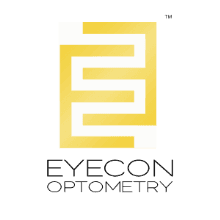WHAT IS MYOPIA CONTROL?
1. What are the side effects of multifocal lenses?
Possible side effects more unique to multifocal lenses are mild blur at near and glare at night time. This can be minimized by reducing the amount of treatment. Other side effects of all contact lenses infection and dry eyes. These can be drastically reduced with proper contact lens hygiene and artificial tears.
2. Are back up glasses necessary?
Yes, glasses are very important. Contact lenses cannot be worn all waking hours are important for correction of vision when glasses are off. It is also important to wear glasses if eyes are feeling dry or irritated. Blue light filtering glasses are beneficial to help with digital eye strain while using computer or other digital devices.
3. Which is better: orthokeratology or multifocal lenses?
Both are excellent options for myopia control and have similar effectiveness based on clinical studies. The option that is better is dependent on your prescription, age, side effects, and lifestyle. For example, someone who is very involved with sports, orthokeratology is better since you can be free of glasses and soft contact lens for all waking hours. You cannot swim with soft contact lenses on. Young children may do better in orthokeratology since parental guidance will always be there for all hours lenses are on the eye. A college student that only is getting 4-6 hours a night would be better suited for multifocals, since 8 hours is necessary for full treatment in orthokeratology. Our doctors will work with you to get a custom treatment that best suits your lifestyle.
4.If I want to discontinue multifocal contact lenses and start orthokeratology is that ok?
Yes. Before discontinuing the lenses, we recommend having completed the orthokeratology fitting. Our doctors will evaluate every 6 months to ensure that the new orthokeratology treatment is effective.
5. Can I discontinue my lens treatment at any point?
It is possible to discontinue treatment at any time if the treatment is not effective or is not well tolerated by the patient. However, it is very important to discuss this with your optometrist before doing so. A new myopia control treatment plan needs to be set before discontinuing any lenses. Multifocal contacts are only effective when the lens is on the eye. If lenses are discontinued, myopia will continue to progress. For most patients with myopia, progression does not stop until after college.

 7217 Reseda Blvd., Reseda, CA 91335
7217 Reseda Blvd., Reseda, CA 91335




